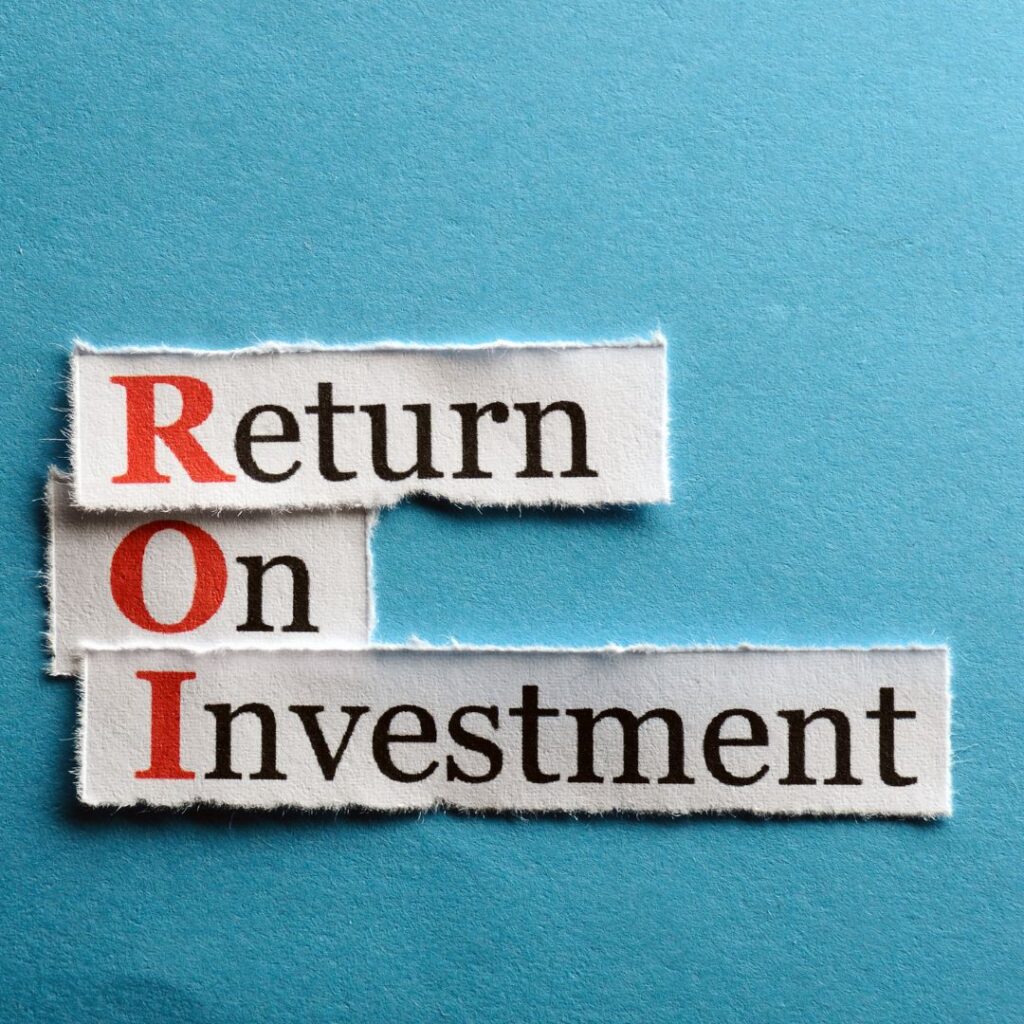In the world of business, making smart investments is key to achieving success. But how do you measure the success of an investment, especially when it comes to marketing and other intangible endeavors? This is where Return on Investment (ROI) steps in – a crucial metric that helps businesses gauge the profitability of an investment.
Understanding ROI:
ROI is a ratio that compares the gain or loss from an investment relative to its cost. It essentially tells you how much profit or return you generated for every dollar you invested. Here’s the basic formula:
ROI = (Net Profit / Investment Cost) x 100%
Why is ROI Important?
ROI serves multiple purposes:
- Evaluating Investment Performance: ROI helps businesses assess the effectiveness of marketing campaigns, projects, or new ventures. It provides a clear picture of whether an investment is generating a positive return.
- Decision-Making Tool: By comparing the ROI of different investment options, businesses can make informed decisions about where to allocate resources for maximum impact.
- Performance Measurement: ROI serves as a benchmark for measuring the success of marketing campaigns. It allows businesses to track progress towards goals and identify areas for improvement.
Beyond the Numbers: ROI Considerations
While ROI is a valuable metric, it’s important to consider its limitations:
- Intangible Benefits: ROI primarily focuses on financial returns. However, successful marketing campaigns can also generate intangible benefits like brand awareness, customer loyalty, and improved brand image, which are difficult to quantify with a single number.
- Time Factor: ROI often focuses on short-term results. However, some investments, like brand building campaigns, may take time to yield a positive return.
- External Factors: ROI can be impacted by external factors beyond an investment’s direct control, such as economic conditions or competitor activity.
Calculating ROI for Different Marketing Activities:
- Paid Advertising Campaigns: Track ad spend and compare it to the revenue generated from the campaign.
- Content Marketing: Measure website traffic, leads generated, and conversions to gauge the return on investment in content creation.
- SEO (Search Engine Optimization): Track website traffic, organic ranking improvements, and conversions to assess the ROI of SEO efforts.
Optimizing Your Marketing ROI:
- Set SMART Goals: Define Specific, Measurable, Achievable, Relevant, and Time-bound goals for your marketing campaigns to effectively track ROI.
- Track Key Metrics: Monitor relevant data points like website traffic, conversion rates, and customer acquisition costs to calculate ROI and identify areas for improvement.
- A/B Testing: Test different marketing strategies and tactics using A/B testing to see what generates the best ROI.
- Focus on Long-Term Value: While ROI is important, don’t neglect the long-term benefits of marketing efforts like brand building and customer loyalty.
ROI: A Compass for Marketing Success
ROI is a valuable tool for businesses to measure the effectiveness of their marketing investments. By understanding its strengths and limitations, businesses can leverage ROI to make data-driven decisions, optimize marketing strategies, and achieve long-term success. Remember, ROI is just one piece of the puzzle. Consider both the quantitative and qualitative aspects of your marketing efforts to paint a complete picture of your marketing ROI.




